#Otomo Yoshihide & Sachiko M
Explore tagged Tumblr posts
Text
Good Morning Good Night, Sachiko M / Toshimaru Nakamura / Otomo Yoshihide (2004)
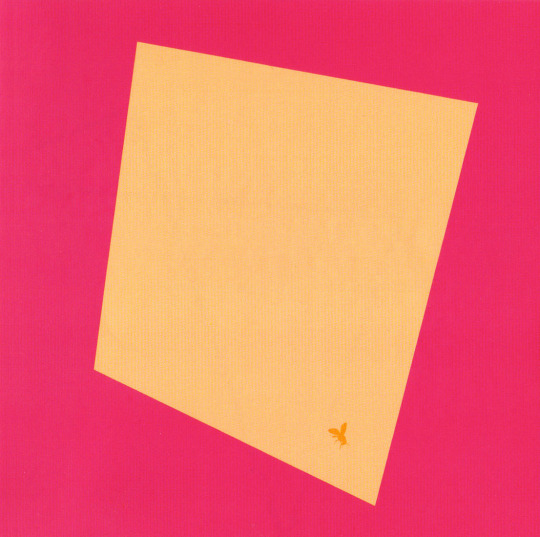
No wonder Good Morning Good Night angers so many – music rarely tests the recorded form like this. Sachiko M, Nakamura and Yoshihide work their strains of experimentalism into the sounds of the everyday, intermingling life with digital buzz and vice versa. One’s experience is totally dictated by circumstance; so life shifts, as one never lives the same sounds twice, so no two listens of Good Morning Good Night are alike.
#Good Morning Good Night#Sachiko M / Toshimaru Nakamura / Otomo Yoshihide#Sachiko M#Toshimaru Nakamura#Otomo Yoshihide#2004#experimental#EAI#improvisation#turntable music#music#review#music review
3 notes
·
View notes
Text
youtube
sachiko m / toshimaru nakamura / otomo yoshihide -- good afternoon
1 note
·
View note
Text
I have started going through a list of 500 ~avant garde~ albums I found on rym and I will now use this blog to give my thoughts on every one
What I have been to up (briefly) so far:
Moondog- moondog: I think I want to change my name to moondog
The pop group- y: post punk like this makes me so happy I have nothing else to say
Tim buckley- starsailor: whatever you think this album sounds like based on the over it does Not sound like that
The mothers of a invention- uncle meat: idk why Zappa doesn’t hit for me but most of the time I was just thinking “that’s nice frank” alsjfhdhdhdw
Henry cow- in praise of learning: I kind of forgot about this one already but I think it was good
Ground zero- revolutionary pekinese opera ver.1.28: Holy Fuckin Shit. There are a couple moments on this album that are some of my favorite moments in music ever. I’m gonna pretend that Disney interpolation at the end doesn’t exist though
Mingus- the black saint and the sinner lady: Holy Shit. MAN does the last track in particular hit
John zorn- naked city:….it wasn’t as abrasive as I thought it was going to be so honestly I’m kind of disappointed
Today is the day- sadness will prevail: as much as I appreciate intentionally grating albums with shit production and bad vocals (I’m not kidding here I mean it lol) there was really one stretch of songs in the middle that stayed with me and the rest of the TWO AND A HALF HOUR LONG ALBUM came and went
Sachiko m, toshimaru nakamura, otomo yoshihide- good morning good night: I fall into the camp of “random tones played at random intervals is good music actually” but if you have any health issues that may be exacerbated by high pitched tones playing for a long time than you should probably avoid this at all costs aldjfhshdhs
Gorguts-obscura: it’s masterfully played death metal but I feel like you can tell if youll like it or not like two tracks in
William basinski- the disintegration loops: my brain has been too addled by years of political discourse and George bush memes to be able to assess with Accidental Soundtrack To 9/11 with any clarity NEXT
Scraping foetus off the wheel- nail: theater kid (complimentary)
The residents- not available: theater kids (derogatorily but in a complimentary way)
Contortions- buy: not my favorite no wave album ever but I just love no wave so much that it doesn’t really matter
This heat-this heat: I listened to deceit a while back and I didn’t hit as much as a expected it to but but thankfully this one works a lot better for me. It’s also helping with the developing theory that no matter how experimental you think music can get nowadays some random guys were doing the exact same thing better in the 70s
Anyway that is all so far see you next time
1 note
·
View note
Link
FILAMENT - Otomo Yoshihide and Sachiko M
August 9, 2000
Uplink Factory - Shibuya - Tokyo
Video shot by Brent Gutzeit
Concert presented by Fader/HEADZ
2 notes
·
View notes
Text
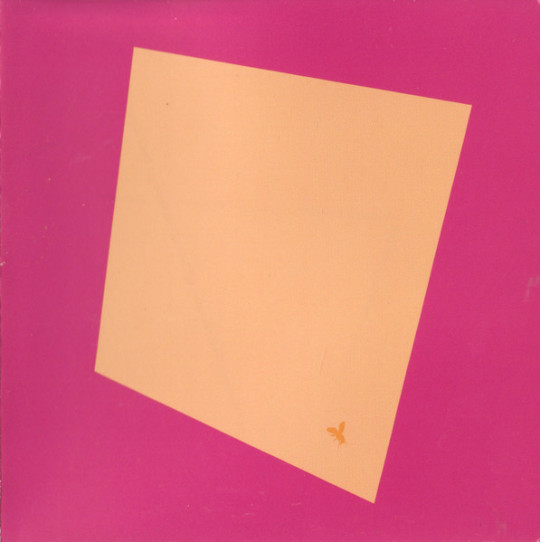

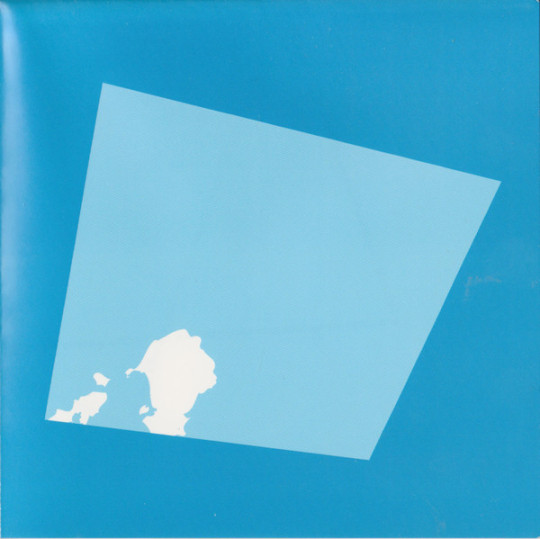
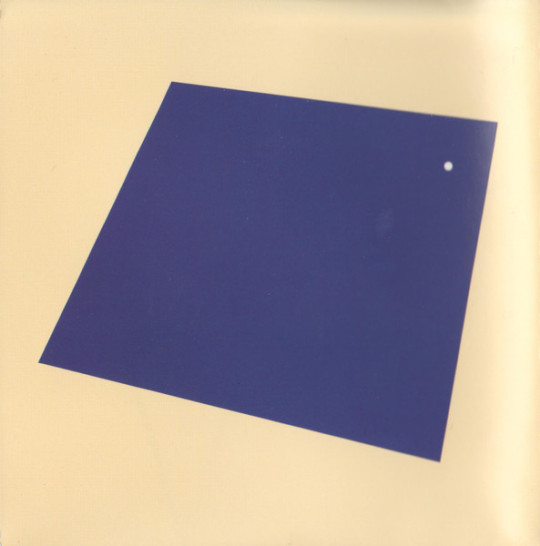
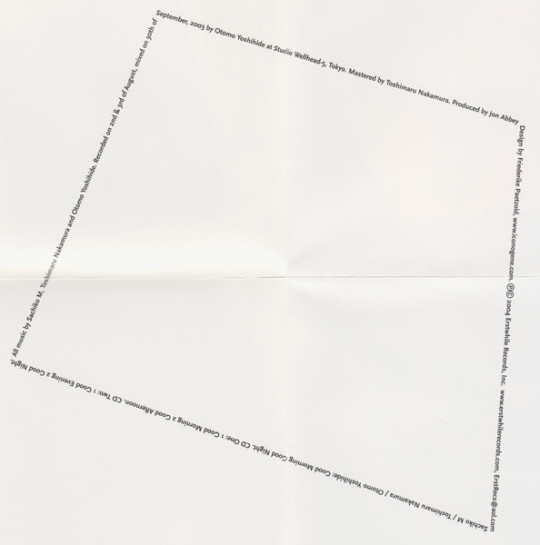
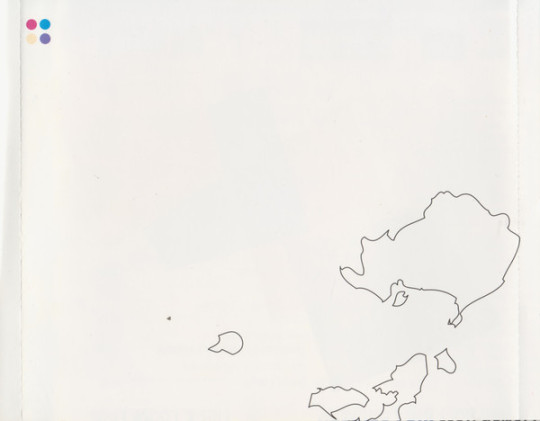
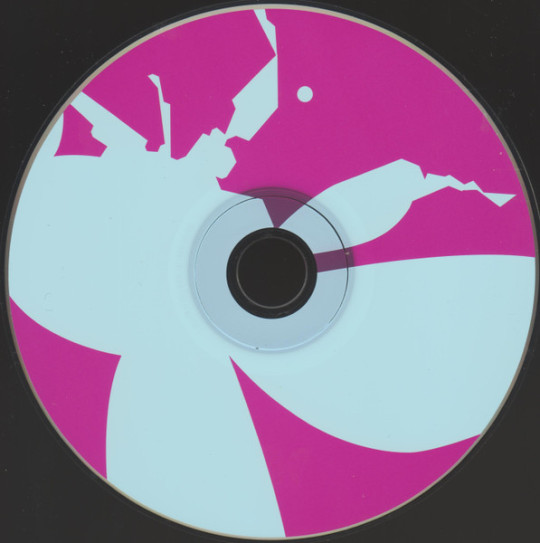

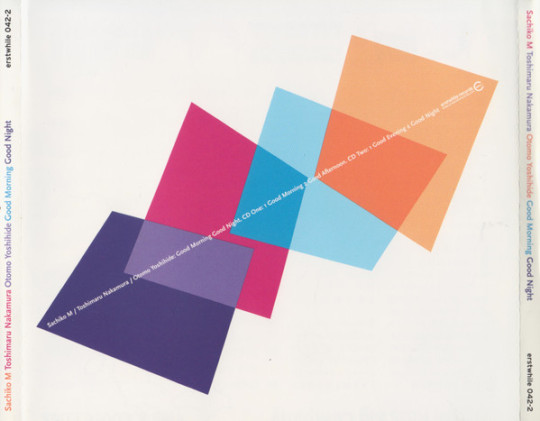
Sachiko M / Toshimaru Nakamura / Otomo Yoshihide – Good Morning Good Night (2004)
CD design by Friederike Paetzold
45 notes
·
View notes
Text
[ID (automatically transcribed): "Good Morning Good Night is perhaps the definitive recorded document of the onkyo movement . Nakamura is grouped with prominent onkyo artist Sachiko M and experimental pioneer Otomo Yoshihide .
Together , they barely make a sound . Over the course of the album's 100 minutes , silence predominates , interrupted at times with sine waves , slight static , and low hums . These minimal sounds encourage the type of careful listening that onkyo adherents relish . The album has become infamous in online music communities like RateYourMusic , where critics and proponents point to the exact same attributes in their attacks and their defenses .
" It's so close to silence that you'd probably gain more by turning it off than leaving it on , " complains one user before giving it 1 ½ stars .
" I literally didn't even notice the album ended when it did because I had grown so accustomed to [ its ] stretches of silence , " praises another , awarding it 4 ½ ." End ID.]

peace on planet earth
341 notes
·
View notes
Text
Filament 1, Otomo Yoshihide & Sachiko M (1998)

Filament 1 grips most in moments which harness the entire low end of the sonic spectrum (of which plenty is no doubt entirely inaudible) into proper, identifiable rhythms. Not entirely gripping, but certainly in parts, it is surely one of the most approachable records in the onkyo genre.
Pick: ‘Filament 1-1’
#filament 1#Otomo Yoshihide & Sachiko M#otomo yoshihide#sachiko m#onkyo#experimental#1998#music#review#music review
1 note
·
View note
Video
Otomo Yoshihide, Sachiko M, and Jim O'Rourke
8 notes
·
View notes
Video
youtube
keith rowe / sachiko m / oren ambarchi / otomo yoshihide / robbie avenaim -- thumb (1/2)
#2000s#experimental#free improvisation#live#minimalism#keith rowe#sachiko m#oren ambarchi#otomo yoshihide#robbie avenaim
2 notes
·
View notes
Text
PrEP School

Hello everyone! It’s Ricky. Okay this week I’m focusing my blog post around the central idea of “songs I would play if I owned and managed a small, obscure listening bar in an alley in Tokyo with egg shells hanging from the ceiling and experimental films being projected on the walls”. These are songs inspired by a time I went on a date with a boy at a small, obscure listening bar in an alley in Tokyo with egg shells hanging from the ceiling and experimental films being projected on the walls. We “met” on Grindr (obviously) and first got dinner at this really chic restaurant. It was one of those restaurants where you sit on the floor, and we were the only people there. The menu was hand written in Japanese on a seemingly antique paper scroll and above us was an erotic painting of a woman defecating on the floor. We couldn't read the menu because neither of us speak Japanese (he is from New York but just moved to Tokyo to be a “freelance graphic designer and image consultant”...whatever that means) so we just ordered something random. It ended up being a single piece of asparagus and like 3 baby corns. Literally that’s it. And it was almost $100. He paid for it and then we left to go to a bar I recommended.
Once we got to the bar it became apparent that it was very my moment and very not his moment. The music was an uncomfortably loud ringing noise when we got there, and it stayed that way for a long time. There is only enough room for 4 people to sit in there, but you could probably fit 10 if you wanted to touch each other. There was a video of a naked woman writhing around on the floor being projected on the walls and the one man who works there seemed really mean. I loved it! Eventually, The Crying Pill by Matmos came on and I literally had an out of body experience. I had never heard this song before, but I was living. I tried to Shazam it but it didn’t work so I took a voice memo of it instead. I told the boy that it was the best song I had ever heard and was so sad I wouldn’t be able to find it. He was not into the song at all but he was pretending to enjoy himself. Anyway, the date was like whatever. He told me he wanted to get face tats and was kind of boring. I never saw him again after that night, but the next day I was listening to my Spotify Discover Weekly playlist and that song came on! Basically what I’m getting at is that it was destiny for me to hear that song at that bar on that night. So now I listen to that song all the time and pretend I work at that bar and get to choose the music they play there. That was a really long introduction to this blog post but 1) you needed that context and 2) this is a blog so I’m not going to apologize for making you read.
The first song I would play at my bar is Plural by Sote. I’m listening to this song right now as I’m writing this and just realized this is my Sicko Mode. Like, this is that song you could throw on at any time and I will immediately drop to my knees. Oh my god, I have chills right now.
The next song I would play is Filament 1 - 1 by Sachiko M and Yoshihide Otomo. I texted this song to Ronan and Cole in our group chat saying “me wall twerking to this song” and Cole laughed at me. I wasn’t joking though, this song makes me want to wall twerk. This song would work really well in a bar/club setting because the only thing better in social spaces than loud music is unusually quiet music.
I also sent them Akuta by Sugai Ken, which would be queued up next. Cole referred to this song as “cave dwelling realness” and Ronan said “the cover of it is cute”. I agree with them and would add that it’s seductive and rousing.
When the clock strikes midnight I play Fantasy by Against All Logic. This song samples Beyoncé’s 2003 seminal masterpiece Baby Boy in the most major way possible. At this point everyone involved would be sweating. The title of this song has me thinking about fantasies. I’ve been fantasizing about being held captive in a large plywood box. If there are any psychology majors reading this please let me know what that says about me.
The next song is Frontier Control by Ausschuss. This is the type of song I would want to listen to while being held captive in a large plywood box. Should I expand on this plywood box fantasy? Yeah, I should. The box would be very large, like, big enough for me to run around in, and I’d be chained up in the center to a really chic bed. This would all be consensual, like I would sign myself up to be held captive in this box. It’s like performance art, I guess. Maybe there would be a peep hole in the box for people to watch me while I listen to this song.
Okay moving on from the box fantasy, the next song is Hard Screw by Metal Preyers. This song has the most beautiful Bon Iver-esque vocal, but like Bon Iver in an accidental K-Hole.
Next I would play Music of the Air by Tim Hecker. This song is actually dedicated to someone really special in my life. Recently my friends and I have been texting a prisoner, and we love him so much. My friend Saya found him on TikTok and got his number, and we’ve all been talking to him since. We still aren't sure how he has a phone in prison. I asked him and he said “bought it”. But it really doesn’t matter, he is so honest and has the sweetest heart (not to mention he’s gorgeous). He has the cutest chains, like he is fully iced out even in prison. He really enjoys talking to us, and even told Saya that he loves her and sent NSFW pictures to Lexi! I dream of one day taking him on a date to my bar in Japan. Until then, we’ll just have to communicate through a screen. This one’s for you baby, one year left until you’re free!
The final song of the night is YUNG RAPUNXEL PT.II by Azealia Banks. This is the perfect song to end a great night. My favorite part is when she asks “want a piece of candy?”. I totally want a piece of candy, do you?
Peace and blessings,
-Ricky
0 notes
Text
[29.10.2019] Taku Sugimoto / Minami Saeki

Już 29 października we Wrocławiu wystąpi znakomity japoński gitarzysta i kompozytor, Taku Sugimoto - jeden z najważniejszych przedstawicieli muzycznego redukcjonizmu! Tym razem zagra w duecie z wokalistką Minami Saeki, prezentując utwory z cyklu Songs. Charakteryzują się one ulotnością pojedynczych dźwięków, stopniowo układających się w proste melodie. Ascetyczna instrumentacja i efemeryczny charakter kompozycji sprawiają, iż słuchacz ma wrażenie uczestnictwa w czymś wyjątkowo kameralnym, kierowanym bezpośrednio do niego. ________________ Taku Sugimoto Japoński improwizator i kompozytor. Jeden z twórców Onkyō - tokijskiej odmiany redukcjonizmu muzycznego. W latach 1985-1988 występował w zespole Piero Manzoni, natomiast po rozpadzie tej grupy zaangażował się w szereg projektów solowych. We wczesnych latach 90. skupił się głównie na grze na wiolonczeli. Założył wówczas Henkyo Gakudan. Przez krótki czas był także członkiem zespołów Ghost i Hikyo String Quintet. Sugimoto powrócił do grania na gitarze w 1994 roku i zaczął regularnie koncertować w duecie z Tetuzim Akiyamą, a następnie w rozmaitych konfiguracjach z takimi wykonawcami jak np. Toshimaru Nakamura, Otomo Yoshihide czy Sachiko M. Zwrócił na siebie uwagę dzięki powściągliwej, a przy tym wyjątkowo melodyjnej grze, co było dotąd czymś niezwykłym w świecie wolnej improwizacji. Z biegiem czasu jego muzyka stawała się coraz bardziej abstrakcyjna, rezygnując z melodii na rzecz ciszy. Taku Sugimoto współpracował z najważniejszymi twórcami muzyki eksperymentalnej, m.in. z Keithem Rowe, Radu Malfattim, Antoinem Beugerem, Michaelem Pisaro, Kevinem Drummem, Tetuzim Akiyamą, Toshimaru Nakamurą, Otomo Yoshihide, Sachiko M, Taku Unamim, Annette Krebs, Burkhardem Stanglem, Jasonem Kahnem, Günterem Müllerem, eRikm i wieloma innymi. Począwszy od 1998 roku był współorganizatorem słynnej serii improwizowanych koncertów, które odbywały się w Aoyama Bar, a następnie w galerii Off Site w Tokio.Obecnie zajmuje się głównie komponowaniem. Prowadzi również wytwórnię płytową Slub Music. https://takusugimoto.bandcamp.com/ http://www.japanimprov.com/tsugimoto Minami Saeki Wokalistka, aktorka filmowa i tancerka. Współpracowała z Taku Sugimoto, Junichiro Tanaką, Wakaną Ikedą, Masafumim Ezakim, Takashim Masubuchim, Manfredem Werderem i Stefanem Thutem, z powodzeniem łącząc żywioły muzyki rozrywkowej i eksperymentalnej. W 2017 r. ukazała się płyta Songs nagrana wspólnie z Taku Sugimoto, a w ubiegłym roku jej kolejna część. Występowała w filmach takich reżyserów jak Yukihiro Kurokawa czy Teiichi Hori.
https://www.youtube.com/watch?v=UrgCVM3gtiA ________________ Tajne Komplety Przejście Garncarskie 2, 50-107 Wrocław 29.10.2019 (wtorek) godz. 20:00 bilety: 20/30 zł
________________
FB: https://www.facebook.com/events/2368643456711483/
________________
Plakat: Karolina Pietrzyk, Gilbert Schneider
1 note
·
View note
Text
Free The Jazz #62 [for Mirtha Vásquez]
1 - Matthew Lux's Communication Arts Quartet - Israels' (from "Contra/Fact", 2017 Astral Spirits)
2 - The Love and Beauty Seekers - Yakuza (from "Żar", 2016 Love & Beauty)
3 - Otomo Yoshihide's New Jazz Orchestra - Mayonaka no shizuka na kuroi kawa no ue ni ukabiagaru shiroi yuri no hana (from "ONJO", 2005 Doubt)
4 - Ray Charles - The Ray (from "The Great Ray Charles", 1957 Atlantic)
5 - Colin Webster / Mark Holub - Splintered (from "Viscera", 2014 New Atlantis)
6 - Eve Risser / Kaja Draksler - Eclats (from "To Pianos", 2017 Clean Feed)
7 - Nate Wooley / Daniele Martini / João Lobo - Chasing Eli Lider Forever (from "Legacy Of Ashes", 2016 Creative Sources)
8 - São Paulo Underground - Estrada para o oeste (edit) (from "Cantos invisíveis", 2016 Cuneiform)
9 - Sun Ra & His Solar Arkestra - The Shadow World (from "The Magic City", 1966 Saturn)
10 - Anna Högberg Attack - Familjen (from "Anna Högberg Attack", 2016 Omlott)
Listen to a new show each week on 8K, and find previous shows over at Mixcloud.
#8k radio#8k christchurch#ja#free jazz#free the jazz#mirtha vásquez#matthew lux#ben lamar#jędrzej Łagodziński#szymon gąsiorek#franciszek pospieszalski#otomo yoshihide#kahimi karie#axel dörner#mats gustafsson#sachiko m#ray charles#colin webster#mark holub#eve risser#kaja draksler#nate wooley#daniele martini#joão lobo#rob mazurek#mauricio takara#guilherme granado#thomas rohrer#sun ra#sun ra and his arkestra
0 notes
Photo

OTOMO YOSHIHIDE / SACHIKO M
FILAMENT / ISO / TV POW
1998 Tour Poster
1 note
·
View note
Photo

Martin Tétreault / Sachiko M / Yasuhiro Otani / Otomo Yoshihide Four Focuses
youtube
0 notes
Photo







POST-SCRIPTUM 747
AGITATION FRITE 2 : DANS UNE GRANDE SOLITUDE, À L’HARMONIUM
Agitation Frite 1, Témoignages de l’underground français est donc sorti chez Lenka lente. Un second volume est en préparation. La forme en est la même : un peu moins d’une quarantaine d’entretiens dont la plupart, cette fois, sont inédits. On en trouvera ici des extraits, régulièrement. Par exemple, Michel Henritzi (Dustbreeders, Discom, Howlin’ Ghost Proletarians)…
EXTRAIT…
Le label historique de Dustbreeders s'appelle Élevage de poussière. Celui que tu as consacré à l'improvisation et créé dans les années 2000 se nomme À bruit secret. Quel est le sens de ces deux emprunts à Marcel Duchamp ?
Au-delà de l’intérêt qu'on pouvait avoir pour le geste artistique radical et iconoclaste de Duchamp, Élevage de poussière s'est imposé à nous (Dustbreeders) du fait qu'on plaçait au centre de notre dispositif instrumental des platines sur lesquelles on jouait des vinyles dans une idée de détournement. On pouvait y voir une analogie avec les ready-made de Duchamp. Qu'est-ce qui ressemble le plus à un élevage de poussière qu'un vinyle oublié sur une platine ? Cela nous a dès lors semblé un nom idéal pour un label vinyle. Il n’était pas question de produire des CD ou des cassettes.
À bruit secret relève toujours de mon intérêt pour Duchamp, mais cette fois, plutôt pour l'aspect conceptuel de son œuvre qui était, à cette époque, en résonance avec ce qui m’intéressait dans la musique improvisée de cette période, et plus particulièrement dans la scène japonaise « réductionniste », même si ses musiciens ne se reconnaissent pas dans ce terme : je pense à Taku Sugimoto, Toshimaru Nakamura, Sachiko M ou Otomo Yoshihide. J’ai fait le choix du CD pour ce label parce qu'il effaçait toute impureté sonore produite par la lecture d’une platine vinyle. Et à considérer cet objet de reproduction qu'est un CD, on peut le voir comme la pièce de Duchamp nommée « À bruit secret », cette petite sculpture dans laquelle un objet non révélé est enfermé et produit un bruit si on le manipule. Le CD est un objet énigmatique en soi, qui ne produit du son que si on le fait tourner dans un lecteur, sinon la musique qu'il enferme nous reste inaudible, secrète. Le nom s'est une fois encore très vite imposé. Duchamp demeure aujourd’hui encore, et pour de nombreux artistes, une boîte à idées.
Une autre boîte à idées, dans ce qui guide tes choix esthétiques, qu'ils soient écrits (puisque tu écris sur la musique aussi), ou sonores (que tu produises les disques des autres ou enregistres les tiens), pourrait être Guy Debord, non ?
C’est à travers ses écrits que Debord a été important pour moi, au travers des clés qu’il nous a données pour comprendre la société du spectacle, notre société. Après je crois que, comme beaucoup de jeunes gens, j'ai pu en avoir une lecture naïve, ou tout au moins une approche purement intellectuelle sans l’éprouver dans une pratique révolutionnaire. Debord m’a plus apporté dans ma critique des musiques, et surtout des musiques dites expérimentales ou radicales que dans ma pratique musicale. Ce que nous apprend la lecture de Debord, c'est que ces musiques qu'on dit extrêmes, radicales, subversives, n'échappent pas au spectacle qu'elles semblent dénoncer. Que la musique dite noise n'est au fond qu'une expérience narcissique et illusoire dans sa critique des musiques mainstream : car il y a une même économie a l'œuvre, un même star system, une même répétition que dans toute la culture marchande. À chacun d'en retirer quelque chose ou non, comme pour n'importe quelle symphonie ou blues. La musique noise n'affirme qu'une différence très narcissique. Je me souviens d'une interview d'Alessandro Bosetti qui posait la question de la radicalité révolutionnaire en demandant qu'est-ce qui était plus révolutionnaire entre une composition de Luigi Nono qui déconstruisait la chanson populaire « El pueblo unido jamás será vencido » ou 5000 personnes qui reprenaient cette même chanson dans un stade de foot. La musique noise n'est finalement que l'écho amplifié du bruit du capital. Pour répondre à ta question, Debord m'a toujours posé problème dans ma pratique. Je me considère juste comme un bluesman, un petit blanc cultivé qui exprime ses colères, ses frustrations, son blues. That's all.
Avant d'évoquer ta pratique, parlons de tes écoutes, celles qui t'ont fait. Tu n'as probablement pas commencé par écouter du blues ?
Quand on a 14-15 ans, on découvre les choses au hasard des rencontres, d’une pochette, sans trop rien connaitre aux styles, genres, enjeux qui s'y jouent.
En vrac, les premiers disques que j’ai achetés, de mémoire : Léo Ferré avec Zoo ; Catherine Ribeiro & Alpes ; Catharsis, Ange, Led Zeppelin, Pink Floyd, Iron Butterfly, Deep Purple, Jefferson Airplane, Can et King Crimson. Tout ça, je l’écoute alors sans hiérarchie, avant la rupture punk que je découvre dès 1976. Ensuite il y a une série d’articles dans la revue Best qui m’introduisent aux Stooges, MC5 et Velvet Underground. Là, c'est le coup de foudre, je sens une vraie connexion avec cette sauvagerie rock. Les pochettes me fascinent : White Light/White Heat du Velvet, comme un trou noir, et les flammes de Fun House. Un des tous premiers concerts que j’ai vu, et qui m’a marqué, c’est Nico bourrée sur scène, dans une grande solitude, à l’harmonium, devant un public hostile venu pour Magma. Arrivent ensuite les premiers LP punk : Damned, Stranglers, Buzzcocks. Je veux évidemment jouer dans un groupe punk !
Tu concrétises alors ?
Comme tous mes copains de lycée, je voulais jouer dans un groupe punk, mais personne ne voulait jouer avec moi : on me disait que j'étais un guitariste trop nul, ce qui était vrai, mais j'avais cette idée naïve, que pour faire cette musique, on n'avait pas besoin de savoir jouer, qu’il suffisait de faire du « bruit » avec n'importe quel instrument et de « crier » sa rage, ses rêves ou ses colères. Finalement, le punk était déjà un mouvement très conservateur, tout du moins en France. J’ai fait mes trucs, seul, avec un magnéto cassette et une guitare, en passant des enregistrements d'usine, de rue, etc., que je trouvais sur des disques de bruitage pour le cinéma. Mes idoles à l'époque étaient Fripp et Eno, plus que les punks en fait. Jusqu'à ce que je découvre, peu après, la no wave, et surtout Throbbing Gristle, qui m'ont ouvert à une approche différente de ce que pouvait être le punk-rock. Une approche connectée à l'art contemporain et à la littérature. Je découvrais en même temps Burroughs, Artaud, Ginsberg, K. Dick…
Un magazine ou un fanzine t'informait des disques à acheter ?
Jusqu’en 1977-1978, Rock & Folk et Best (comme je disais) orientaient mes achats de disques. Quelques années plus tard, j'ai découvert le monde des fanzines : New Wave, Atem, Forced Exposure et d'autres dont j’ai oublié le nom..., ..., ...
Photos : Natacha Thiery
( Nico, par là )
#michel henritzi#ibuki kuramochi#natacha thiery#toshimaru nakamura#sachiko m#otomo yoshihide#marcel duchamp#guy debord#dustbreeders#dust breeders#howlin' ghost proletarians#throbbing gristle#william s. burroughs#allen ginsberg#philip k. dick#magma#philippe robert#lenka lente#agitation frite 2#agitation frite#nico#the velvet underground#the stooges#léo ferré#jefferson airplane#catherine ribeiro#alpes#deep purple#catharsis#led zeppelin
12 notes
·
View notes
Video
youtube
0 notes